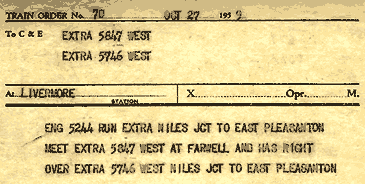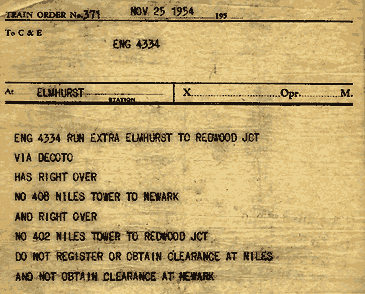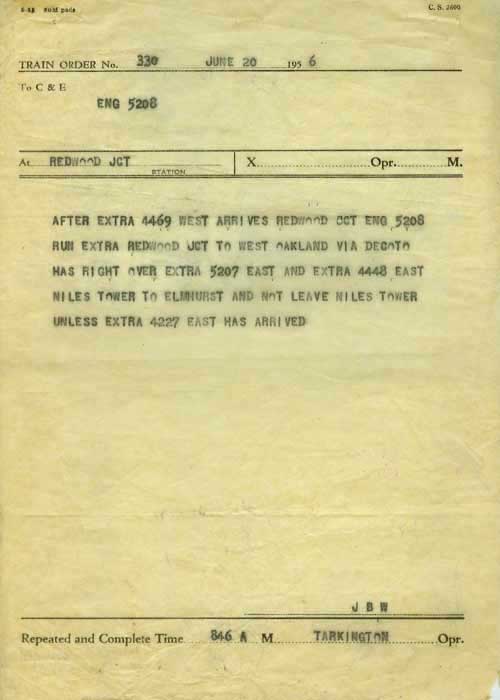Forms S-C and D:
When You're Hot and the Others Are Not
When You're Hot and the Others Are Not
The dispatcher has the option of creating a train of superior right over regular, extra, specific, or all trains. Form S-C is used for opposing trains, and Form D is used for trains headed in the same direction. Their appearance is the same. Right over orders are often combined with other forms, such as Forms G and S-A in the case of Order No. 70, below right.
In today's world, when a train gets DTC or track warrant (TWC) authority to run between Niles Jct. and East Pleasanton, this authority is identical to the 'right over all trains' of the past. Under all three systems, the train has authority to hold the main between the named points, and must not run on main track at the end points unless otherwise instructed. Under DTC or TWC, the 5244 would be given authority to run from Niles to Farwell, and after the 5847 roars past, it would receive authority to run from Farwell to East Pleasanton.


Elmhurst is at the end of double track, so the Extra 4334 has rule D-251 authority to run eastward from Magnolia Tower (Oakland) to Elmhurst, where it enters the single track line through Hayward. At Niles, signal indication from Niles Tower determines who will go on what track. The 4334, now headed westbound, then enters the Centerville main knowing that No. 408 is the inferior train.
At Newark, the 4334 is now under the mercy of the Newark Tower interlocking operator, who gives the train the lineup to head over the Dumbarton Bridge to Belle Haven, where rule D-251 again applies (note that the dispatcher could have stipulated "run extra... to Belle Haven" instead of Redwood Jct. with the same result).
At Redwood Jct., the tower operator gives the signal to the 4334 when he is sure that any following commute trains on the Penisula double track will not be delayed by the 4334's presence.
We don't know if the 4334 will wind up at Bayshore or Mission Bay, but tower operators near those two points will line the train accordingly.
What we do know from order No. 371 is that, barring unforseen circumstances, the 4334's crew probably is going to enjoy a 'straight shot' from Oakland to San Francisco, since they will not obtain train orders (that might delay progress) at Niles or Newark. If you look closely at order 371, you may see lip marks from where the engineer kissed it.

